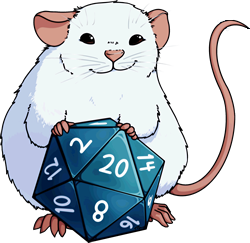Shadows in the North? I figured I should call the current game something other than FRG’s FR Campaign but didn’t want to spend too much (actually any) time on coming up with a name…it is in the North and the Shadowfell and/or Netheril will be involved…so Shadows in the North (SitN).
Shifting Gears
I’m shifting gears and dropping the Pathfinder campaign. It was pretty apparent that the direction I wanted to take the game was not going to work for my group. So, instead, I’ll be running something of a “beer-and-pretzels” Forgotten Realms game centered around the Scepter of Spellgard module from WotC. Pretty much standard 4e rules (maybe a house rule or two).
Fledgling Pathfinders
The characters for the 4e Pathfinder campaign are largely finished and we had our first actual play session this week. The basic premise of the campaign is that the characters are, for one reason or another, interested in becoming members of the Pathfinder Society.
Aspects, Action Points, and 4e
My group had our “first” session last night for the 4e Pathfinder campaign. This session was devoted entirely to character creation but there wasn’t a single character sheet on the table. Huh?
Next up…Pathfinder (sort of)
The group is about to wrap up Keep on the Shadowfell. As numerous folks around the web have commented, it is, of course, rather heavy on the combat side of things (though not really that much more than a lot of published adventures). From a mechanics perspective, even though we’ve (or at least I’ve) had at least one or two “oops” moments each session, it has given us some good experience. I think (hope) it has also given me a better feel for how to use 4e for a more story-oriented game.Continue reading →
The A Posteriori Gestalt of 4e
Philosophers beware…I’m butchering your concepts mentioned in the title.
I’ve decided, after a few more sessions of 4e, that the game emphasizes an a posteriori gestalt while 3.5 emphasized the a priori part. So what the hell does that mean? In 3.5, everyone pretty much knew ahead of time what it meant each time some action occurred in the game. Continue reading →
FRG Goes 4e
This week marks my trial run with 4e. Starting Friday, I’ll be running the Keep on the Shadowfell preview adventure from Wizards of the Coast. I don’t look to this adventure to be the be-all and end-all of the 4e trial or to be as story-oriented as I prefer. I do hope, however, that it gives me (and my players) a good enough feel for the rules system to see if we can use the new rules for a good, story-oriented game. Continue reading →
Gnome Stew…Yummy!
Gnome Stew is a new blog for GMs by GMs written by a number of experienced GMs. I’ve got a link to it over on the right there. I particularly like the “Don’t Fall For These RPG Arguments” article and have to say that I’d like to Continue reading →
Acting and Representation as Character Roleplaying
Johnn Four over at Roleplaying Tips has a discussion about what it means to roleplay a character. He has a distinction between acting and representation as roleplaying.
Continue reading →
Plot Devices, Plot Opportunities, Published Adventures, and FRG
I admit that I use a lot of published adventures in my campaigns partly because I’m lazy, partly because some of them are pretty good but mostly because my brain is wired that way. I have a strong tendency to see how things can (even if they shouldn’t) fit together. I often use bits and pieces of different published adventures and tie them into a campaign to further an ongoing story or to introduce a potential new direction. One of the major problems of doing this, however, is that most published adventures rely upon plot devices rather than plot opportunities to advance the story and plot.
Continue reading →
